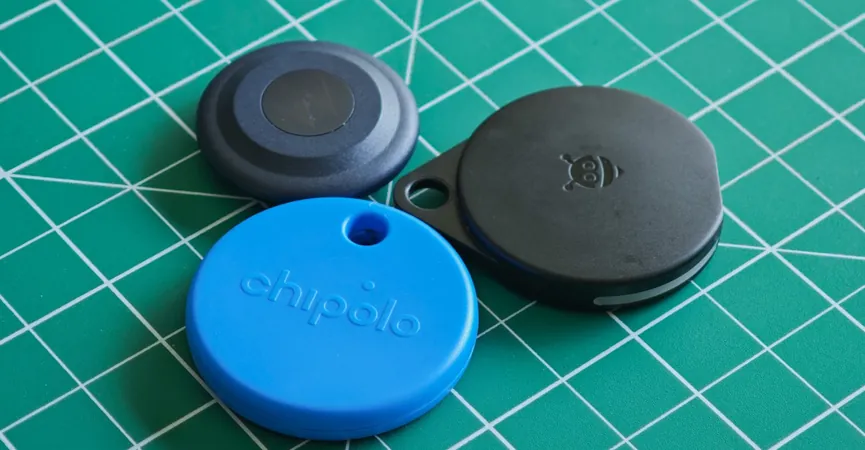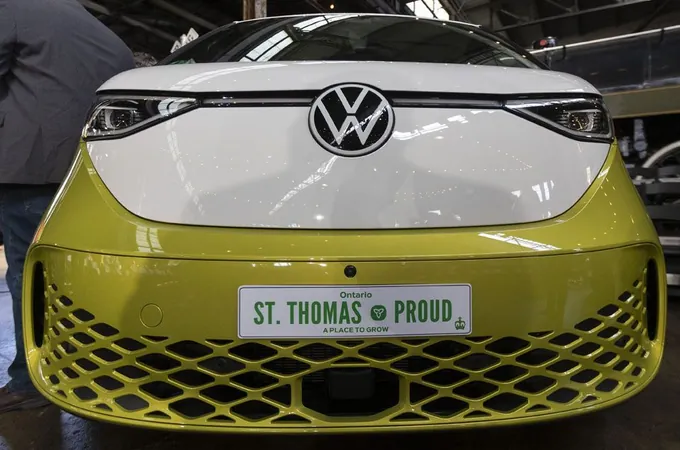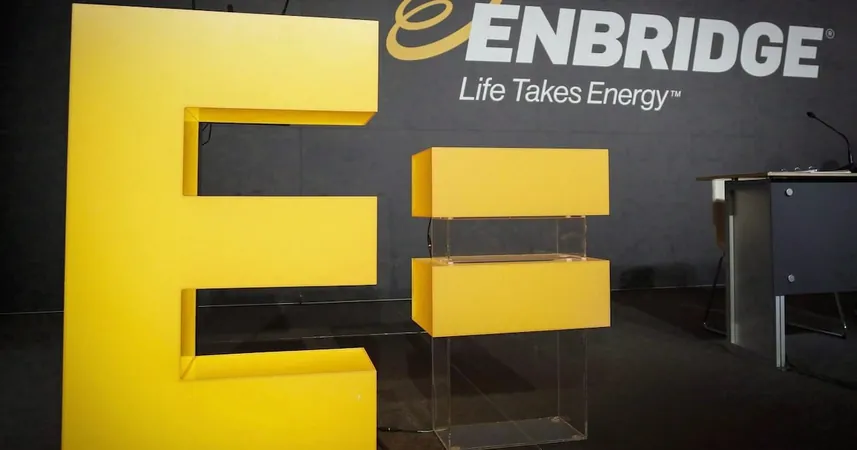
Has Google's Find My Device Network Finally Caught Up?
2025-04-26
Author: Olivia
In April 2024, Google unveiled its eagerly awaited Find My Device network, aimed to rival Apple’s popular AirTag. However, the launch was met with a lukewarm reception—a sluggish rollout and scathing reviews left many skeptics questioning its viability. Fast forward a year, and there’s curiosity about whether Google has made substantial improvements to its tracker network.
To get to the bottom of this mystery, I embarked on an extensive investigation, assessing trackers from major competitors: Pebblebee, Chipolo, and Motorola. Currently, Google has yet to release its own Google-branded tracker, and Samsung's SmartTags operate independently on its SmartThings Find network. For comparison, I also acquired an Apple AirTag and a Tile tracker.
After testing, I discovered that Google's Find My Device network indeed exhibits marked improvements since its inception, showing performance that closely matches Apple's and Tile’s when conditions are ideal—like in a bustling city and with stationary devices. However, the shortcomings reveal themselves in more challenging environments like rural areas or with moving items, where Google still trails behind.
Understanding the Network
The essence of the Find My Device network is similar to Apple’s Find My network; it lets users trace dedicated smart tags, offline devices, and a select assortment of third-party gadgetry equipped with Bluetooth tracking. The system relies on Bluetooth connections between lost devices and nearby Android phones that relay encrypted location data back to the network, allowing users to locate their valuables.
Yet, it's not as cut-and-dry as it seems. Initially, Google’s approach to handling device locations was notably conservative, prioritizing user privacy. It required multiple Android devices to simultaneously establish a Bluetooth connection with a tracker to effectively share a location, making it less reliable. Early reviews criticized the network's lag, with instances of days passing without a single ping.
Responding to feedback, Google promised enhancements and noted significant progress—items can now be located four times faster than during the network's debut. Internal data indicated that optimizations in Bluetooth scanning frequency and duration have boosted efficiency.
Interestingly, user opt-in behavior has played a role in this transformation. Those willing to trade some privacy can switch to a setting that allows Google to utilize their phone’s location data individually, similar to how Apple operates. Although the user interface makes this option a bit hidden, more people are opting in than before.
The Tracker Showdown
Before diving deeper, let’s quickly explore the trackers I tested—Pepperbee's Clip, Chipolo's Pop, and Motorola’s Moto Tag, all tailored for Google's network.
The Pebblebee Clip is slightly larger than an AirTag, with a Bluetooth range of up to 500 feet and a unique USB-C rechargeable feature, promising a year-long battery life. Chipolo focuses on simplicity with its Pop model, offering a maximum range of 300 feet, yet using a standard battery that requires periodic replacement. Motorola's Moto Tag mirrors the AirTag in size and boasts an IP67 water resistance rating—ideal for any mishaps.
Comparatively, Apple’s AirTag delivers precision tracking via Ultra Wideband (UWB), effectively guiding users right to their lost items. It also includes separation alerts, unlike Google’s offerings, which can prevent losing items in the first place.
Testing Landscape
In a quest to assess these trackers, I strategically placed them in a park across from a bustling café in London, then marked them as lost. The Tile was the first to report its location, 15 minutes later, followed closely by the AirTag. Google’s trackers emerged thereafter but with wider search radii, indicating less precision.
I took the challenge a step further, relocating my test to a quieter suburban area. Here, Apple continued to lead, delivering rapid and precise results, while Google’s network failed to register at all throughout the testing period.
Sound and Precision
Once close to a potential recovery site, finding the tracker became crucial. Although Apple’s UWB technology offers directional guidance, Google’s trackers possess a major advantage—they’re remarkably loud. Each Google tracker I tested can emit sound strong enough to be heard several rooms away, making up for the lack of UWB.
Across weeks of testing, Google’s network seemed competitive in urban settings, but faltered in precision, particularly for moving targets. This led to broad search areas, which can be inconvenient when searching for a lost item in a taxi or other locations.
Safety vs. Functionality
Google’s architecture appears intentional; they favor privacy and user safety over real-time tracking. This prioritization can be problematic for those needing immediate assistance. Interestingly, issues persist with unknown tracker alerts, which have seen mixed success across the different platforms.
As it stands, Google’s Find My Device network isn’t quite on par with Apple's Find My service for reliability and accuracy. The philosophical divide stems from Google’s commitment to user privacy while still navigating the challenge of effective recovery.
For those who prioritize precise tracing of their belongings, Apple's AirTag may still be the better bet. That said, Google's holistic approach champions individual privacy, suggesting that for some users, its 'good enough' may be just right. While this marks a departure from Google's historical data-centric approach, it may also signal a new chapter in user-focused privacy.









 Brasil (PT)
Brasil (PT)
 Canada (EN)
Canada (EN)
 Chile (ES)
Chile (ES)
 Česko (CS)
Česko (CS)
 대한민국 (KO)
대한민국 (KO)
 España (ES)
España (ES)
 France (FR)
France (FR)
 Hong Kong (EN)
Hong Kong (EN)
 Italia (IT)
Italia (IT)
 日本 (JA)
日本 (JA)
 Magyarország (HU)
Magyarország (HU)
 Norge (NO)
Norge (NO)
 Polska (PL)
Polska (PL)
 Schweiz (DE)
Schweiz (DE)
 Singapore (EN)
Singapore (EN)
 Sverige (SV)
Sverige (SV)
 Suomi (FI)
Suomi (FI)
 Türkiye (TR)
Türkiye (TR)
 الإمارات العربية المتحدة (AR)
الإمارات العربية المتحدة (AR)